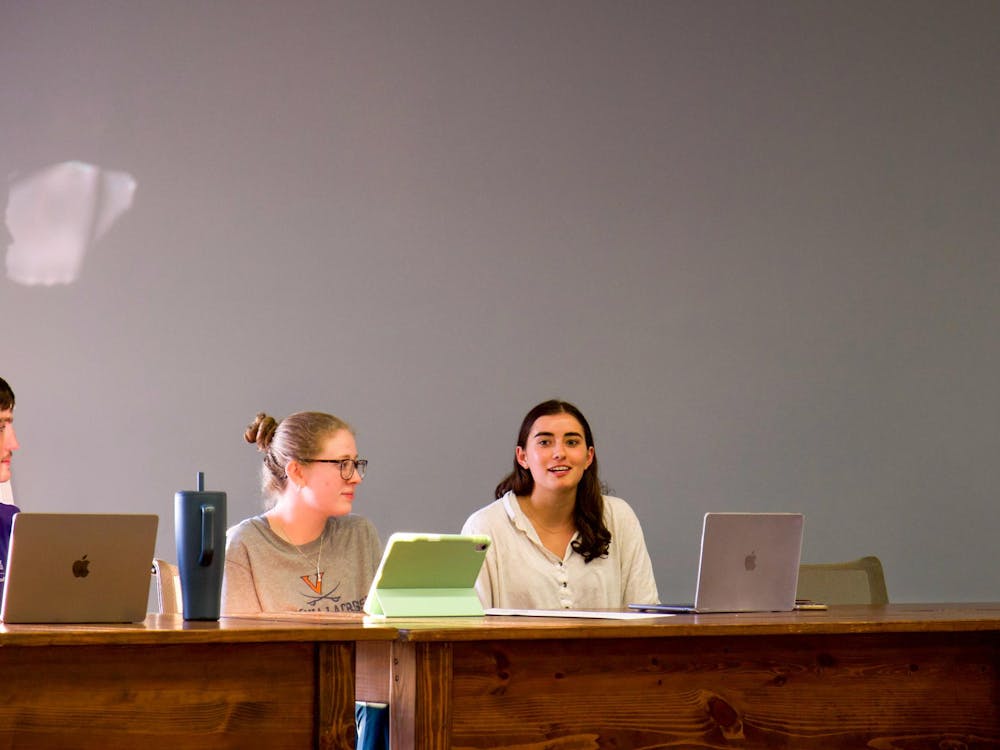This year’s fraternity rush is expected, by some, to be the safest and most supervised recruitment in recent years.
Inter-Fraternity Council President-elect Ben Gorman, a third-year College student, said the negative coverage of Greek life by Rolling Stone and other media outlets has, in fact, led to a slight decrease in rush signups. This decrease may be attributed to the implementation of a late registration period, however, which allows students to sign up the day rush starts.
“Also, parents may be concerned about their children rushing fraternities,” Gorman said.
Fraternity rush is the series of social events hosted by the IFC and individual fraternity chapters where prospective Greek members interact with current members of fraternities.
This year’s fraternity rush follows not only a Nov. 19 Rolling Stone article implicating Greek life at the University as a dangerous milieu, but also the lifting of temporary suspensions on Greek life and addenda to their Fraternal Organization Agreements with the University.
The FOA already required dry rush events, but the new addenda increase requirements of fraternity events in the hope increasing student safety, Gorman said.
“Fraternities are going to be even safer than they may have been before,” Gorman said.
Fourth-year Engineering student Paul Van Pernis, current IFC vice president of membership, said fraternities will now take it upon themselves to ensure they only operate within the law and FOA guidelines this year.
“Everybody knows that we are being watched, and I think now more than ever it is imperative that everyone follows the FOA agreements,” Van Pernis said.

Why rush?
Reasons for participating in rush vary, Gorman said. Fraternities offer members various benefits, such as life-long friendships, alumni connections, leadership positions, brotherhood, community service and social activity.
“The purpose of rushing falls on individuals themselves,” Gorman said. “Everyone has a different intent for rushing. … Social activities being the least of them.”
Students interested in joining a fraternity are often interested in the close-knit bonds formed between members.
Van Pernis described his rush experience as “a great way to connect and get closer, and interact with other guys.”
Van Pernis also said when his mother passed away, his fraternity brothers traveled with him to Nashville and provided him emotional support.
“The first people I had told were my fraternity brothers,” Van Pernis said.
Even after college, members often reflect on their fraternity experience as a defining factor in their life.
Dean of Students Allen Groves, for example, said in a speech at the Pre-Recruitment Information Meeting that he still identifies as a fraternity man, many years after his own time in college.
Rushing by the numbers
“[Rush] is a process of narrowing down where [the rushees] fit in best,” Gorman says.
The IFC maintains records of rush participants, 60 to 70 percent of whom will end up receiving a fraternity bid — an offer of acceptance — by the end of the process, current fraternity brothers said.
Delta Sigma Phi President Peter Trombly, a third-year College student, said roughly 400 rushees attended their open house last year. Two hundred were invited back to the first round, 100 to the second and 50 for the third round. Twenty-five bids were eventually offered — roughly six percent of the initial attendees. Twenty new members ultimately accepted their bids.
Another fraternity, which wished to remain anonymous, said their open house last year brought 310 rushees —165 of the 230 first-round invitees attended, 88 of the 141 second-round invitees attended and 46 of the 61 invitees in the third round attended. Twenty-two of the 23 bids — 7.4 percent of the original number of rushees — accepted the offer and joined the fraternity.
As a part of the rush process, a rushee first attends open house events. The rushee can then be invited back for subsequent rounds — there are three — with three events held during the first two rounds and two events held during the third round. Finally, at Final Hours, a rushee will visit his third choice chapter first, his second choice chapter next and his first choice at the end.
Paying dues
Current and incoming members of fraternities pay financial dues to their fraternity, some reaching almost $1,000 per semester to maintain active membership.
Dues fund both institutional costs and initiation fees, covering everything from food to insurance, Trombly said.
Van Pernis, however, said a rushee should not ask about dues from the outset during the rush process, since prospective members’ financial situations do not affect bids for membership.
“If you just met a [brother] … it’s kind of weird to ask him how much he pays per semester,” Van Pernis said. “You don’t want to shell-shock someone. No [fraternity] will think less of a kid because of his financial means.”
Van Pernis said many fraternities also offer scholarships for members.
Having a fulfilling rush experience
To share opinions on and suggestions for rush, the IFC hosts mandatory annual pre-recruitment information sessions.
This year, however, fraternities will allow rushees to register at the door, Gorman said. As a result, rushees may miss this pre-rush information session entirely — therefore missing the presentation on how to safely navigate the rush process.
Third-year Commerce student Chase Pion, the IFC vice president of the judiciary committee, said though the rush process will be dry, Boys’ Bid Night may not be. However, the measures outlined in the FOA addenda, including those requiring bouncers and sober brothers, are to be implemented by fraternities, which agreed to these new terms during these processes.
“As far as fraternity infractions during rush go, there are more complaints filed during rush than for the rest of the year,” Pion said. “However, that is not due to rush causing an increase in bad behavior, but because the number of fraternity sponsored events during rush skyrocket when compared to the number of fraternity events during a typical two week period.”






